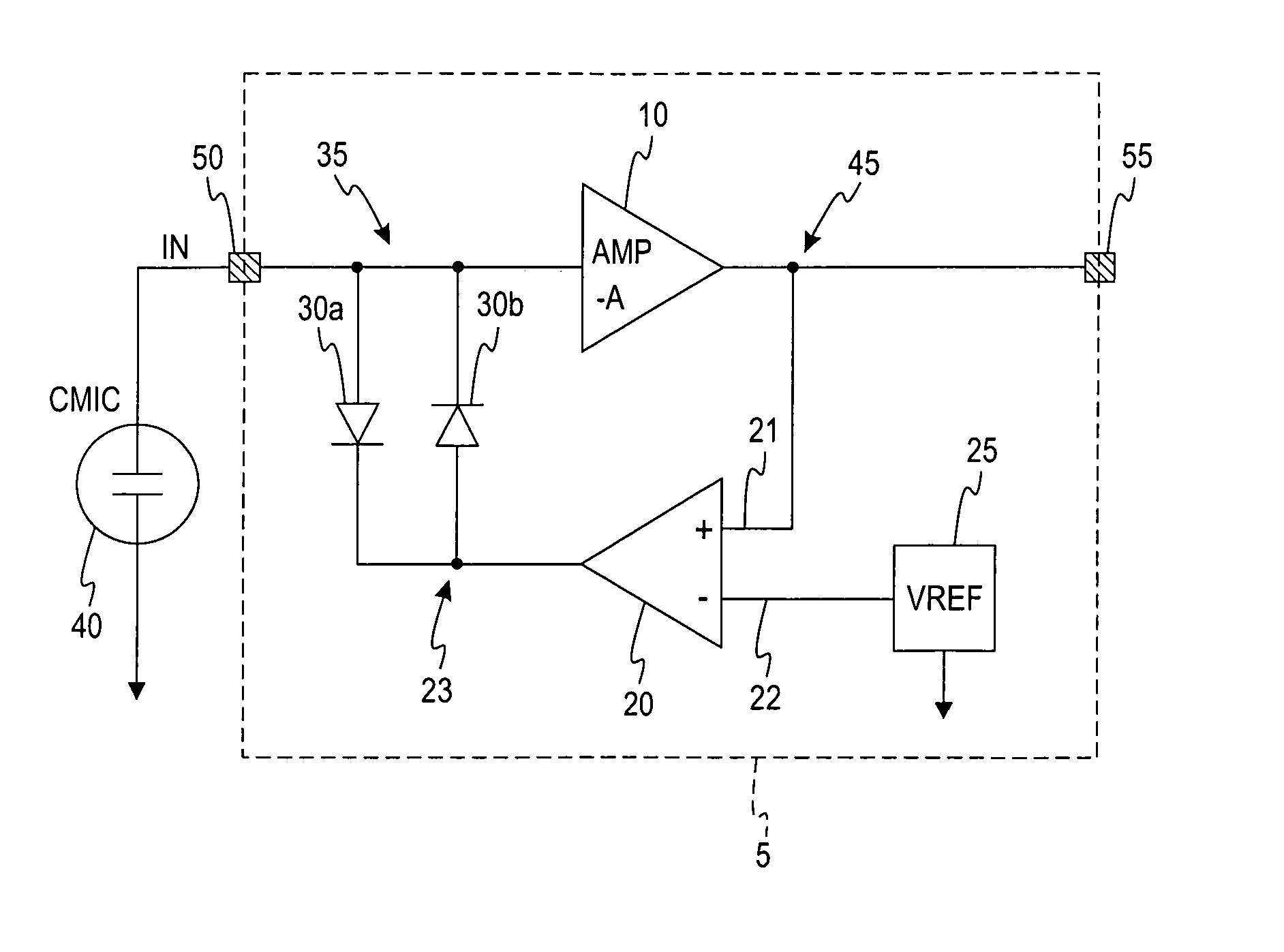Amplifier circuit for capacitive transducers
a capacitive transducer and amplifier circuit technology, applied in the field of capacitive transducer amplifier circuits and miniature condenser microphones, can solve the problems of large settling time of the combined transducer and amplifier system, inconvenient and unfortunate trade-off between low noise and low noise, and achieve low input capacitance , the effect of minimizing any loading of the capacitive transducer and low noise amplification/buffering
- Summary
- Abstract
- Description
- Claims
- Application Information
AI Technical Summary
Benefits of technology
Problems solved by technology
Method used
Image
Examples
Embodiment Construction
[0030]FIG. 1 shows a condenser transducer element 40 of a miniature microphone coupled to an amplifier circuit integrated on a monolithic integrated die 5. According to the present embodiment of the invention, the condenser transducer element 40 comprises a MEMS-fabricated transducer of silicon base material, but the invention is equally applicable to microphones based for example on electret transducer ele-elements that relies on a pre-deposited electrical charge layer of one or both transducer plates.
[0031]The amplifier circuit comprises an inverting preamplifier 10 and a differential servo amplifier 20 which has a first input connected to an output of the inverting preamplifier 45 and a second input connected to a reference voltage, VREF, generator 25. A non-linear device (30a, 30b) is coupled between an output terminal 23 of the differential servo amplifier 20 and an input node or terminal 35 of the inverting preamplifier 10. The non-linear device comprises a pair of cross-coupl...
PUM
| Property | Measurement | Unit |
|---|---|---|
| input resistance | aaaaa | aaaaa |
| time constant | aaaaa | aaaaa |
| input impedance | aaaaa | aaaaa |
Abstract
Description
Claims
Application Information
 Login to View More
Login to View More - R&D
- Intellectual Property
- Life Sciences
- Materials
- Tech Scout
- Unparalleled Data Quality
- Higher Quality Content
- 60% Fewer Hallucinations
Browse by: Latest US Patents, China's latest patents, Technical Efficacy Thesaurus, Application Domain, Technology Topic, Popular Technical Reports.
© 2025 PatSnap. All rights reserved.Legal|Privacy policy|Modern Slavery Act Transparency Statement|Sitemap|About US| Contact US: help@patsnap.com


